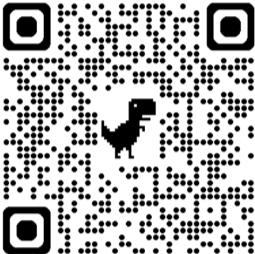Acquired Disorders
A review of concepts/terms learned throughout the semester
Create multiple-choice games on Wisc-Online and play them on our Chakalaka mobile app!
But that's not all! Explore educational games created by others. Simply search by category or enter agame code number and dive into a world of learning and fun.
Download the Chakalaka mobile app here:

Topics of this game:
- Controls smooth muscle of the internal organs and glands and also responsible for fight or flight
- In the CNS, collections of axons are called
- In the PNS, collections of axons are called
- The two sides of your cortex are connected by a thick band of nerve fibers called
- Where is the cerebellum located?
- Aphasia refers to problems primarily with production/formulation of language (Broca's)
- Aphasia is problems primarily with comprehension/processing of language. (wernicke's)
- Resulting from damage to the hemisphere which is not language dominant
- Denial of deficits and/or lack of awareness of deficits
- Having difficulty recognizing objects or pictures despite functioning visual sensory ability
- Difficulty recognizing familiar faces despite preserved object recognition
- TBI patients having difficulty with insight, self monitoring of behavior, knowing their limitations etc.
- Type of aphasia that both portions of the language center are impacted by the stroke
- This aphasia is like receptive aphasia, but they can repeat
- This aphasia is like expressive aphasia but they can repeat
- When a patient has an inappropriate emotional response, sometimes in response to personal family information
- Brain disease characterized by neurofibrillary tangles and amyloid plaques
- Proteins between nerve cells in the brain
- Protein fibers inside the brain's cells
- Disease w/ early onset, personality changes, irritability, depression, chorea & eventually psychotic behavior
- What is often a problem as dementia progresses?
- When do you aspirate the most?
- How many cranial nerves are involved in swallowing?
- Bruises on the brain are called
- Receptive aphasia patients are often called the what?
- Errors in word and phoneme selection
- A naming or word finding problem that most aphasia patients have struggled with
- When a patient is "stuck" on a particular response and keep repeating it over and over
- Naming to a description
- Ability to process information presented in the graphic modality
- Aphasia can be mild, moderate, or severe
- This approach will assist the patient in learning to live life with their language problems
- Protects the brain and skull with three layers of non-nervous tissue
- What keeps the brain moist, lubricates the brain and protects the brain from changes in pressure
- Injury results from a significant pressure change affecting air and fluid filled areas of the body.
- Localized damage that tends to result from penetrating injury
- Exposed brain tissue and opens the brain to more infections
- Occur after the initial impact as the body responds to it
- Collection of blood, described by its location
- A serious complication that produces swelling
User comments are currently unavailable. We apologize for the inconvenience and are working to restore this feature as soon as possible.

